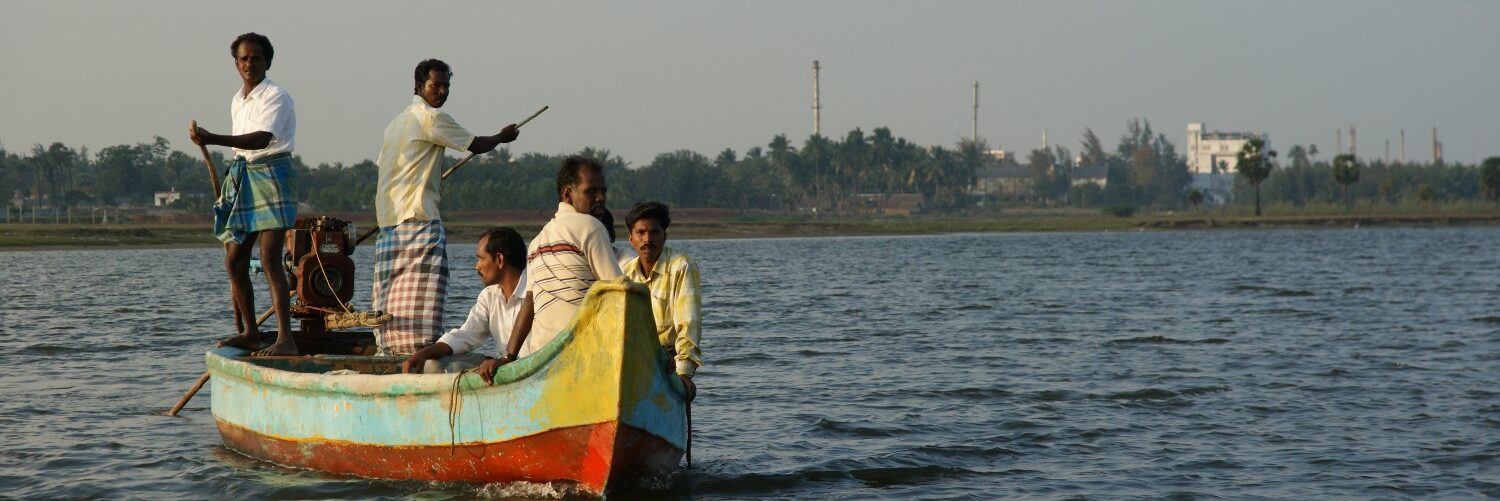25 June 2008
Priya M Menon
Times of India
Cuddalore: Banu might be living in a village close to the sea, but she can’t remember the last time she breathed fresh air. “Our children do not know what clean air is,” says the 39-yearold resident of Eachangadu village in Cuddalore. Banu and the few hundred residents of this small village live within the industrial complex of the State Industries Promotion Corporation of Tamil Nadu (SIPCOT). The factories within the estate chemical, pharmaceutical, textile and pesticide units release toxic gases, turning the air into pure poison.
People in this area are 2,000 times more likely to get cancer, with children, the elderly and infirm being the most vulnerable, according to a recent report by the National Environmental Engineering Research Institute (NEERI). The Nagpur-based organisation found at least 22 toxic gases, many of them carcinogenic, are in the air. “Most children have asthma. We don’t feel like eating because the stench of chemicals makes us feel nauseated,” says Thilakavathy, a resident. Most villagers are agricultural labourers and fisher folk or contract labourers in the factory.
In Songolikuppam and Semmankuppam villages, women crowd around to discuss their health problems. Renuka Devi, an agricultural labourer, says she has had strange skin eruptions for five years. Uma Selvi, a health worker at Songolikuppam village, says, “All the women suffer from menstrual disorders and complain of headaches and dizziness.”
The NEERI study on volatile organic compounds in the SIPCOT estate found 94 chemicals in the air, including 15 hazardous air pollutants. The level of benzene, a chemical that causes blood cancer in children, is 125 times above safe levels, while other carcinogens like chloroform, carbon tetrachloride, methylene chloride and trichloroethylene are 881, 553, 32.5 and 21.8 times higher than acceptable levels.
Studies done in 2004 and 2005 by the SIPCOT Area Community Environmental Monitors (CEM) showed similar results. The NEERI study, commissioned by TNPCB, was completed in August 2007 but not made public. CEM used the Right to Information Act in March 2008 to access the report.
For two decades, environmentalists, human rights activists and villagers have been trying to draw attention to the pollution. Though studies have been conducted, reports submitted and recommendations made, factories continue to violate norms, endangering the health of over 20,000 people in 10 villages in and around the estate. Efforts to relocate villagers have been half-hearted.
But industry officials have dismissed all reports on pollution and the impact on health. In a letter to NEERI and government agencies, SIPCOT Cuddalore Industries Association questioned the parameters of the study.
“We have instructed all industries to take measures to reduce VOC emissions,” says a senior TNPCB official. However, they haven’t set a time frame. “We have no standards for VOC emissions. The Central Pollution Control Board is yet to prescribe the limits,” he says.
Cuddalore District Collector Rajendra Ratnoo says his administration has “written to the Central Pollution Control Board asking for an epidemiological study to be carried out by independent health organisations. Our health officers will also be conducting a study.” He plans to issue health cards to the villagers. “I have been conducting surprise inspections. Some have upgraded their technology to be less polluting.” Plans for off-site mock drills involving the community and a grievance redressal forum are in the pipeline.
Efforts were made in 1997 and 2000 to rehabilitate people from Eachangandu and Kudigadu, says a SIPCOT official. “But some villagers didn’t agree, as they were not happy with the site identified,” he says. The plan provided only land, and no houses. K Indra Kumar, secretary, Cuddalore SIPCOT industries association says, “We’re still willing to work with SIPCOT if villagers are willing.” Villagers seem keen to be relocated but nothing has happened so far.
Nithyanand Jayaraman, CEM advisor, says, “Like Bhopal, we’re ignoring all the warning signs. People in Cuddalore are dying silently but we are not paying attention.”
CHEMICAL COCKTAIL
94 chemicals found in the air, including 15 known hazardous air pollutants
Areas near Eachangadu village are worst affected. Risk levels near Asian Paints and Tagros Chemicals also high
Benzene that causes blood cancer in children is 125 times above safe levels
Chloroform, carbon tetrachloride and methylene chloride upto 881, 553 and 32.5 times above acceptable levels
